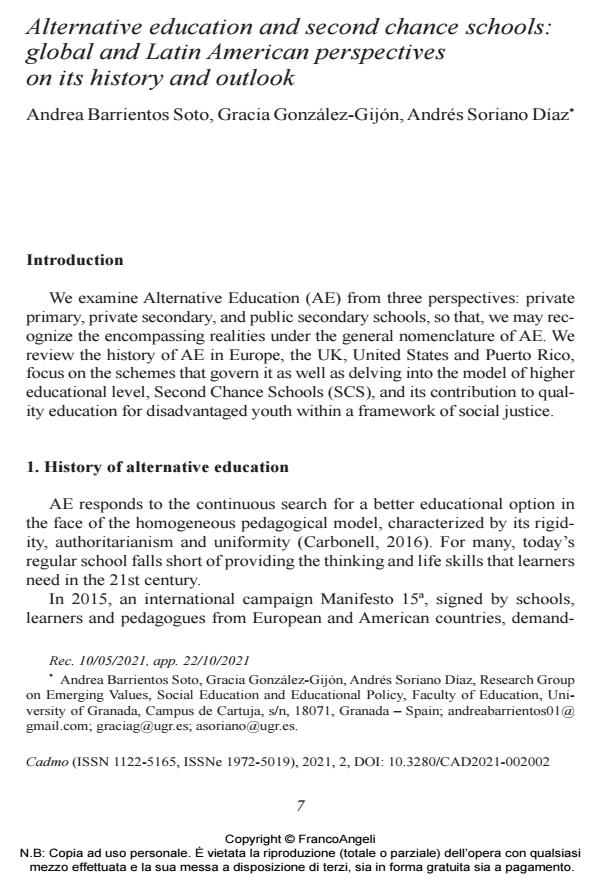Alternative education and second chance schools: global and Latin American perspectives on its history and outlook
Titolo Rivista CADMO
Autori/Curatori Andrea Barrientos Soto, Gracia González-Gijón, Andrés Soriano Díaz
Anno di pubblicazione 2022 Fascicolo 2021/2
Lingua Inglese Numero pagine 14 P. 7-20 Dimensione file 225 KB
DOI 10.3280/CAD2021-002002
Il DOI è il codice a barre della proprietà intellettuale: per saperne di più
clicca qui
Qui sotto puoi vedere in anteprima la prima pagina di questo articolo.
Se questo articolo ti interessa, lo puoi acquistare (e scaricare in formato pdf) seguendo le facili indicazioni per acquistare il download credit. Acquista Download Credits per scaricare questo Articolo in formato PDF

FrancoAngeli è membro della Publishers International Linking Association, Inc (PILA)associazione indipendente e non profit per facilitare (attraverso i servizi tecnologici implementati da CrossRef.org) l’accesso degli studiosi ai contenuti digitali nelle pubblicazioni professionali e scientifiche
Alternative Education has become a tool for inclusion for young people with particular needs not normally addressed in homogeneous schools. This article presents a theoretical review of its history, its typology and the organizational schemes used as it correlates to the regular school system. We review the impact of Alternative Education’s Second Chance Schools on student performance and retention based on the experience in Latin America, Europe and the US.
Parole chiave:alternative education, disadvantaged youth, early school leaving, history of education, second chance schools.
Andrea Barrientos Soto, Gracia González-Gijón, Andrés Soriano Díaz, Alternative education and second chance schools: global and Latin American perspectives on its history and outlook in "CADMO" 2/2021, pp 7-20, DOI: 10.3280/CAD2021-002002